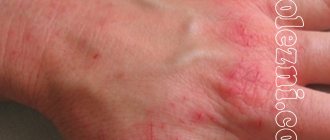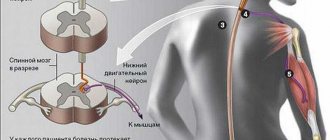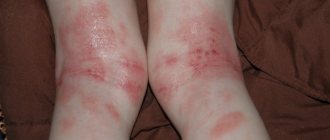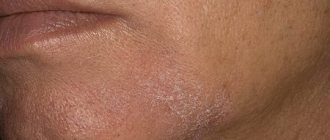Muscle weakness is a common problem that occurs for a variety of reasons. This term can have different meanings: muscle fiber fatigue, decreased strength, or muscle inability to work. Weakness may occur in the arms, legs, or throughout the body.
There are many reasons for decreased muscle strength. Well-known diseases or rare pathologies often lead to their fatigue. Muscle weakening can be reversible or permanent. To correct this disorder, it is necessary to conduct a thorough diagnosis to identify its cause. Only after this can the doctor draw up a treatment plan.
Why does muscle weakness occur in adults?
It can occur due to diseases:
- Myositis with inclusions;
- Polymyositis.
In these diseases, weakness is usually associated with pain. They belong to the genus of inflammatory muscle diseases.
Find the answer
Are you having any problem? Enter “Symptom” or “Name of the disease” into the form, press Enter and you will find out all the treatment for this problem or disease.
With inclusion myositis, weakness of the proximal muscles of the limbs is observed, and with polymyositis, on the contrary, weakness of the distal muscles is observed. Possible weakness in the muscles of the neck and jaw.
Initially, weakness is usually observed in the upper limbs of a person, and only then moves to the arms.
Symptoms of muscle weakness appear gradually (less often suddenly), and slowly increase. In addition to muscle diseases, weakness in the arms and legs is characteristic of other diseases.
For example:
- Neurological diseases (stroke, multiple sclerosis, trauma);
- Spinal diseases (scoliosis, osteochondrosis);
- Endocrinological diseases (diabetes mellitus, Addison's disease, hypokalemia);
- Vascular diseases;
- Infections.
Sometimes a person experiences muscle weakness due to a disease called myasthenia gravis. It is caused by what are called autoimmune attacks. This disease often occurs in young people and the elderly. With it, muscle strength is lost, it can suddenly appear and disappear.
When diagnosing, it is important to understand whether a person really suffers from muscle weakness, or whether it is the consequences of fatigue or pain that are not related to weakness of the muscles of the limbs.
Other reasons
Fatigue of the whole body can be caused by disruptions in the functioning of the central nervous system. Such disorders can occur with increased anxiety, depression, and sleep disorders. Primary weakness does not appear in such conditions.
Muscle fatigue occurs when chronic pain causes the body to produce special hormones. Due to constant discomfort, the muscles are not used, so weakness may occur over time.
A specific muscle group weakens after injury
Muscle strength decreases after injuries, such as sprains, dislocations, and fractures. When muscle fibers are damaged, bleeding, swelling, and inflammation occur. After an injury, the muscles become weaker, and local pain appears when they are loaded. As damaged tissue heals, weakness may appear.
Some medications (for example, statins, antibiotics, NSAIDs) can damage muscles, causing an adverse reaction or allergy. As a rule, fatigue occurs first, which intensifies if the patient continues to take the drug.
Corticosteroid medications can lead to weakening if taken for a long time. Also, the likelihood of developing the syndrome can be provoked by cardiological, antiretroviral, antiviral, immunomodulatory drugs, chemotherapy drugs, and thyroid medications.
With regular alcohol abuse, weakness of the muscles of the shoulder girdle and hip occurs.
Smokers have narrowed arteries, which causes peripheral vascular disease. Therefore, there is a risk of muscle weakening.
Narcotics cause severe muscle weakness.
Types of muscle weakness in women and men
There are several types of muscle weakness.
Of them:
- Atrophy;
- Hypertrophy;
- Myotonia;
- Fasciculations.
- With atrophy, muscle volume noticeably decreases, which is easy to detect upon examination. The muscle becomes exhausted and weakens.
- Muscle hypertrophy occurs when a muscle begins to act as a weakened muscle.
- With myotonia, it is difficult to relax a muscle after a long contraction.
- Fasciculations are twitching of muscle bundles that vary in speed and irregularity.
The most important
The term “muscle weakness” includes 3 concepts: primary, fatigue and muscle fatigue. In the first case, muscle strength is initially reduced, in the second, more effort is required to perform a normal action, and in the third, the muscle gets tired faster than usual and recovers strength more slowly. There can be many reasons for this: from a passive lifestyle, infections, to aging of the body. Weakness is often caused by chronic diseases, neurological disorders, certain medications or other toxic substances. Most often, unpleasant symptoms are caused by genetic diseases. To identify the cause of the pathology, you need to visit a therapist, who will suspect problems and refer you to a specialist. Treatment should be aimed at the cause of muscle weakness. You should not postpone a visit to the doctor or self-medicate, as this will only worsen your condition.
When to see a doctor
If you regularly or constantly begin to feel weakness in the muscles of your arms and legs, but it has nothing to do with fatigue or overwork, then it is advisable to consult a doctor.
Weakness will be a signal for a serious illness. To find out the root cause, you need to visit a neurologist, endocrinologist, surgeon, therapist and other doctors, undergo the necessary studies, and take tests.
If weakness occurs rarely, is not accompanied by pain, muscle numbness, and subsides quickly, then you should try to simply start eating right, drinking more water, and spending more time in the fresh air.
In any other case, you need to see a doctor; the listed diseases require medical intervention, and self-medication can be dangerous to a person’s health and even life.
Neurological disorders
Pathologies that disrupt the functioning of the nervous system lead to muscle weakening. Many such conditions are chronic.
Examples of neurological disorders that cause muscle weakness:
- Cervical spondylosis is an overgrowth of osteophytes (bone growths) that compress the nerves.
- Guillain-Barré syndrome is a rare pathology in which the immune system attacks its peripheral nerves.
- Botulism is a severe toxicoinfectious disease that affects peripheral nerves.
- Eaton-Lambert syndrome is an autoimmune disease associated with impaired neuromuscular transmission.
- Multiple sclerosis is a rare autoimmune disorder that develops when the immune system begins to damage the nerves.
- Myasthenia Gravis is an autoimmune neuromuscular disease.
- Spinal cord injuries can interrupt the connection between nerves and muscles.
All of the above conditions can cause muscle weakness to a greater or lesser extent.
Control methods at home
As soon as you feel weak, calm down and lie down, let your muscles rest and relax.
You can try to start taking a natural drug to calm the nervous system, for example, valerian extract or Afobazol.
It would be a good idea to consult a specialist. It is worth giving up drinking alcohol and smoking. An excellent drink option would be regular tea with chamomile or mint.
Try to adjust your diet, exclude harmful foods that are difficult for digestion.
Try to drink more clean water. But all these measures are temporary solutions to the problem. To establish an accurate diagnosis and treatment, you need to consult a doctor.
Useful tips for preventing pathology
To avoid experiencing limb weakness, follow some rules.
First, distribute your day correctly. In addition to work, you need to find time to relax. Sleep at least 8 hours.
If you get very tired during the day because you are constantly on your feet, try to choose at least a few minutes to lie down and relax. Take a relaxing bath. This is a good way to give rest to both the muscles and the entire nervous system. You can add aromatic essential oils.
Be sure to review your diet. Try to eat healthy, avoid unhealthy foods, fast food, and alcoholic beverages. If you don't have the strength to do strenuous physical activity, then start practicing yoga. This is a great way to eliminate fatigue and anxiety.
Massage helps a lot. It can be done both in a medical office as prescribed by a doctor and in massage parlors. During the massage, all the muscles of the body are well worked out, it helps to relax and calms the human nervous system.
The importance of proper nutrition
For proper and healthy muscle function, it is necessary to consume as many vitamins and beneficial microelements as possible.
Useful products are:
- Cottage cheese (as it is rich in protein and calcium);
- Porridge (it is advisable to cook porridge in water; eating boiled milk is undesirable);
- Milk (do not boil!);
- Fresh vegetables, herbs;
- Vitamins C, B, E, D;
- Vegetable oils;
- Honey.
It is important to avoid consuming large amounts of sugar and salt.
Avoid spicy seasonings. You need to avoid various instant foods and cereals. Do not eat sausages, dumplings and other store-bought convenience foods.
Eat seasonal fruits and make fresh juices. Avoid chips, crackers, salted peanuts, and other beer snacks. You need to stop drinking alcohol and smoking.
Try to drink as much water as possible. Definitely not carbonated. Drink at least one and a half liters of water a day. Avoid black tea and coffee. Better drink herbal teas. They will relax your nervous system. The more vegetables and fruits, the more vitamins.
Avoid sweet carbonated drinks, even packaged juices, they contain nothing healthy, sugar and harmful additives. Maintaining a healthy lifestyle and regular visits to the clinic is the best prevention against disease.
Manifestation of this pathological condition in vegetative-vascular dystonia
Vegetative-vascular dystonia is a syndrome characteristic of certain diseases, for example, mitochondrial pathology or hormonal disorders in the body. This is a complex of symptoms manifested in autonomic dysfunction of the heart and blood vessels.
Blood circulation suffers - that is, enough oxygen with red blood cells does not reach the patient’s limbs, and carbon dioxide, on the contrary, is not excreted.
It is not uncommon to experience constant feelings of severe weakness or aches throughout the body, dizziness, and weakness. Sometimes, with severe degrees of vegetative-vascular dystonia, it comes to frequent and prolonged fainting, the whole body experiences oxygen starvation.
Interestingly, the way to get rid of this syndrome is to increase physical activity. For normal metabolic processes, the formation of lactic acid is necessary. With a decrease in physical activity, lactic acid is almost not produced, which only worsens the patient’s condition.
Therefore, despite the strong feeling of weakness in the arms and legs, you need to move. Starting with walking, gradually switch to running, do warm-ups so that the heart begins to work more actively and metabolic processes accelerate. It is only possible to overcome weakness; other methods, including treatment with medications or folk remedies, unfortunately, will not help. On the contrary, the situation may worsen - to simple muscle weakness is added a rapid heartbeat, a feeling of lack of air, shortness of breath appears, and constant anxiety, fear, and panic attacks are not uncommon.
If you have vegetative-vascular dystonia, you should listen to the doctors, start moving at least a little, then the condition will improve more and more, allowing you to increase the load. You will get a strong body, accustomed to training, and weakness will disappear. It is still necessary to look for and then eliminate the cause of this condition - this is a syndrome, so it is a consequence.
The main causes of muscle weakness
The most common causes of muscle weakness are:
- Passive lifestyle. If a person does not use his muscles, does not train them, then fat cells begin to replace muscle fibers. Then the muscles weaken, their density decreases, they become flabby. Their strength does not disappear, but the number of fibers decreases, then they no longer contract effectively. A person feels that the muscle mass has decreased, then it is more difficult for him to perform the usual movements, he gets tired faster. If you start doing regular exercise, size and strength can be restored. But as you age, muscle weakness will become more noticeable. To avoid this, you need to plan your workouts wisely. It is better for older patients to exercise under the supervision of an instructor or physical therapy doctor.
- Age-related changes in the body. As you age, muscles become less strong and their volume decreases. Most people over 40 years of age perceive this process as natural. However, many feel discomfort from their own powerlessness. This can be corrected through regular physical activity, which will help strengthen muscles and increase fiber volume.
- The period of gestation. Rapid muscle fatigue can occur during pregnancy and a few days after childbirth. This may be due to high concentrations of steroid hormones, as well as a lack of iron (anemia), which leads to weakening of the muscles. But this is a normal state for an expectant mother. If desired, a woman can perform gymnastics, but the doctor selects a set of exercises taking into account her physiological characteristics.
- Infectious diseases. This is another common reason why muscles weaken. This occurs against the background of inflammatory processes. Muscle strength decreases due to influenza, Lyme disease, syphilis, toxoplasmosis, meningitis, polio, and rabies. This condition can be caused by the Epstein-Barr virus, HIV. Then the patient not only feels weak, but also has a headache, a skin rash, decreased appetite, increased temperature, joint pain, nausea, vomiting, etc.
Important. It is more difficult for older people to recover from injury, since metabolic processes slow down and thin bones are more fragile. Therefore, it is better to enlist the help of a specialist.
Muscle weakness in the legs occurs against the background of vascular atherosclerosis, when the innervating nerve fiber is pinched, varicose veins, wearing tight shoes, flat feet, etc. This syndrome develops less often in the arms than in the lower extremities. Weakness of the hands can be caused by atherosclerosis, pinched or injured one of the nerves, sharp fluctuations in blood pressure, or stroke.
Why does drowsiness also occur?
Weakness throughout the body, drowsiness, apathy - these symptoms are familiar to everyone, everyone has experienced them at least once in their life. At such moments, you don’t even have the strength to get out of bed or hold a mug in your hands. I constantly want to sleep, chills begin throughout my body.
The symptoms are alarming and signal that something is wrong with our body. These are perhaps the most common complaints; they are included in the symptoms of many pathologies.
They often appear at a temperature caused by any inflammation in the body - be it a cold, bronchitis or cold kidneys, the temperature will still rise. This disrupts metabolic processes in the body. The human body is mainly a protein structure. Proteins are the basis of any metabolic processes, so we absolutely need them. They, like any organic substance, have what is called a temperature optimum.
It starts at 36 degrees and ends at 37. This is just one degree at which our body can function well. The well-known temperature of 36.6 is ideal - at it the rate of metabolic processes is optimal. When the proteins go beyond the upper limits of the temperature optimum, they lose their structure - denaturation occurs, that is, the bonds holding the protein in the globule state disintegrate, it unfolds, losing the ability to function.
With any increase in temperature, we feel so overwhelmed, we experience the diseases associated with this symptom so hard.
Weakness in the arms and legs manifests itself during intoxication - that is, infection of the body with toxins. The spectrum can be wide - from viral or simple hepatitis to basic poisoning.
Another pathology characterized by weakness in the body and drowsiness is brucellosis. The disease is rightly called one of the most dangerous - it is an infectious-allergic pathology that ends in the death of the patient.
Muscle weakness is observed in many blood diseases. These include leukemia or myeloid leukemia. These symptoms may indicate rheumatism.
In case of somatic diseases - renal failure, amyloidosis - that is, serious changes in metabolism leading to the formation and deposition of substances dangerous to us in the tissues, Crohn's disease, which is a pathology of the digestive system, cancerous tumors.
Diseases of the endocrine system make themselves known through weakness and drowsiness. These are hormonal regulation disorders, which are a serious pathology.
These will also be diseases of the nervous system - neurasthenia, depression, organic lesions, for example, epilepsy.
Diagnosis and treatment
The first thing anyone who experiences muscle weakness should do is consult a doctor. You may need the help of a therapist, neurologist, endocrinologist, rheumatologist, infectious disease specialist or geneticist. First, you should visit a therapist, who will suspect the cause of the disorders and refer the patient to a specialist.
Then the doctor collects an anamnesis, he is interested in which muscles have weakened, when this happened, the degree of weakness, provoking factors, other symptoms (pain, muscle spasms, respiratory disorders, difficulty swallowing, sensory disturbances), their presence in close relatives. Then the specialist evaluates motor activity using diagnostic exercises and reflex tests.
The range of diseases that lead to muscle weakness is wide, so to establish a diagnosis it is necessary to carry out the following laboratory and instrumental examinations:
- Tests to determine the concentration of muscle enzymes (creatine kinase, aspartate and alanine aminotransferase, lactate dehydrogenase).
- Detecting the level of electrolytes in the bloodstream (calcium, potassium), which, when imbalanced, causes muscle weakness.
- Immunological studies to detect antibodies to the acetylcholine receptor and skeletal muscles, which can cause damage to neuromuscular structures.
- Electroneuromyography is performed to assess the process of nerve impulse conduction.
- Muscle MRI is prescribed if degenerative muscle changes are suspected.
- Computed tomography or magnetic resonance imaging is prescribed if a stroke is suspected.
- DNA testing can identify specific mutations if they are present. It is carried out after consultation with a geneticist.
Treatment of muscle weakness should be pathogenetic, that is, aimed at eliminating the cause that caused the appearance of this symptom. If this is impossible, for example, in case of genetic pathologies, then therapy is aimed at correcting and compensating for dysfunction of muscles and internal organs.
In case of autoimmune diseases, to eliminate chronic weakness, hormonal drugs and cytostatics are used, which reduce the production of antibodies and the aggression of the immune system towards the body’s own tissues. For infectious diseases, antibiotics, antiviral, antifungal or antiprotozoal drugs are prescribed.
If myasthenia gravis is caused by the influence of autoantibodies on the mineral synapse, then medications are used for treatment that improve the conduction of nerve impulses to the muscle. Sometimes the doctor prescribes a thymectomy (removal of the thymus gland), as well as taking corticosteroids and immunosuppressants.
If weakness is caused by endocrine disorders, then the doctor prescribes drugs that compensate for the lack of a certain hormone or, conversely, reduce the excessive activity of the gland.
Congenital myopathies and myotonia are treated with conservative methods (physiotherapy, exercise therapy, orthopedic devices). The patient is prescribed medications that normalize metabolic processes in the muscles and strengthen them. If internal organs, such as the myocardium, are damaged, appropriate medications are used, and if necessary, a pacemaker is installed. Special medications and diet will help restore the balance of electrolytes.
Treatment with traditional methods
To overcome muscle weakness, in addition to gradually increasing physical activity, you need:
- Including protein foods in the diet - fish or meat, preferably with a minimum fat content;
- On the contrary, you will have to give up drinks like coffee or tea, and especially sweet sodas;
- It is recommended to drink 2 tablespoons of grape juice 2-3 times a day for several days;
- It is worth taking one glass of potato broth with peel 3 times a week;
- In a 1:1 ratio, mix crushed walnuts and wild honey, take every day for several weeks;
- Eat as many iodine-containing foods as possible;
- Drink 10% motherwort infusion every evening, half a glass per day;
- Prepare a mixture of 1 glass of lemon juice, half a glass of cranberry juice, 2 tablespoons of sugar; take half a glass half an hour before meals;
- Take warm baths every evening - water temperature 37-38 degrees - with essential oils of bitter almonds, black pepper, sage, thyme, citrus fruits: orange, tangerine, lemon, grapefruit; You can make masks with them.











